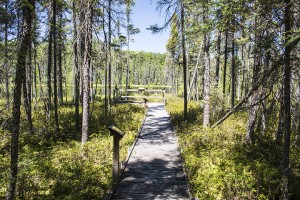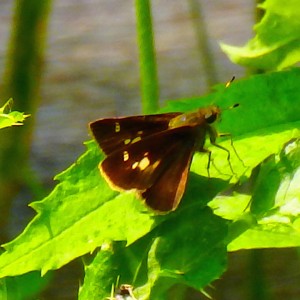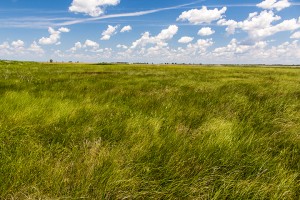In 1961 the state of Minnesota set aside 14,000 acres in Aitkin County to preserve Savanna Portage, a 6-mile long, centuries old, canoe portage. Savanna Portage State park became Minnesota’s third largest state park. On April 23, 1973, Savanna Portage was placed on the National Register of Historic Places. The park today is 16,259 acres and receives 57,952 annual visits.
The northeast half of the park is mostly peat bog and mostly inaccessible except by the Savanna Portage Trail. The central portion of the park contains many small lakes, rolling hills, and long ridges. This area contains low areas of swamps, fens, and wet meadows separated and criss-crossed by hardwood- and mixed-forested ridges. The ridges are end moraines left by a retreating lobe in the last glaciation. Most of the park’s 32 miles of hiking trails are in this area.
Visitors this week (7/12 to 7/18/2015) will see purple pitcherplant, northern blue flag, and swamp candles blooming next to the bog boardwalk trail; American white waterlily and variegated yellow pond lily blooming on the surface of shallow lakes; elliptic shinleaf, white avens, yellow avens, limber honeysuckle, early figwort, American vetch, and veiny pea blooming in the forest; and black-eyed Susan blooming in forest openings. They will also see scores of northern crescents, many white admirals, and a few Canadian tiger swallowtail, Compton tortoiseshell, summer azure, and other butterflies.
http://minnesotaseasons.com/Destinations/Savanna_Portage_State_Park.html



